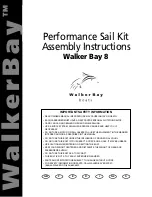
28
checked for all sources so that no channel has to be turned on to feed the
Off Line bus.
Mix Off Line – This setting allows one to create a bus-minus for a non-
Telco source. It is only active when Telco Source is unchecked. When this
setting is checked, the channel’s bus-minus is fed the Off Line bus while
the channel is off. When the source channel is turned on, the bus-minus
switches to the Bus Minus/Base Mix setting.
Telco Source – When checked the console identifies the source as a Telco
or a 4-wire device (e.g., a caller or remote). Examples of Telco devices are
phone hybrids, ISDN interfaces, POTS codecs, IP codecs, and 2-way
radios. Each Telco device has a From Network audio signal which connects
to the console channel and a To Network audio signal that is returned to
the Telco device which is typically that channel’s bus-minus signal.
When a Telco Source is taken on a fader channel, one bus assignment
button blinks to indicate the bus (Off Line, PGM 1, PGM 2, PGM 3, or PGM
4) that’s currently being returned to the Telco device (the To Network
signal). The correct channel’s bus-minus signal can automatically be
connected to the output connected to the Telco device by using Associated
Connections (see page 35 for details on using Associated Connections).
Studio Mutes
Microphones are identified by setting the source to mute one or more
monitor outputs when their channel is turned on. Figure 3-11 shows the
typical settings for Control Room microphones. Both CR and Cue are
checked to mute those speakers when a CR Mic is turned on. For mics
located in a separate talk studio, typically only Studio is checked, unless
cue is being fed to that studio, then both Studio and Cue are checked.
Typically, the HDPN output is not checked so it normally is not muted by
any source.
Figure 3-11 VDips Page Tab Settings for a Control Room Mic
Studio Tallies
Each mic triggers a tally output by checking one of the Studio 1 – Studio
4 Tallies. If no Studio Tally is checked, the mic status indicators on the
channel displays are not shown and the On Air indicator in the meter
bridge does not light up when the mic channel is turned on. Tally 1 is
typically used for the Control Room and Tally 2 is typically used for the
Talk Studio. Tallies 3 and 4 are available to trigger warning lights at two
External locations with hot mics like an announce booth or a newsroom.
The four studio tally commands are labeled: Studio 1 In-Use up to
Studio 4 In-Use in PR&E Navigator. These commands are typically used to
trigger LIO outputs on the Mix Engine, Razor, or M4IP-USB Blade to
activate outboard warning light interfaces like a Henry Superelay, a
Sonifex On-Air light, or M!ka mic arm lights. The Studio 1 In-Use up to
Studio 4 In-Use commands can also drive SLIO commands to trigger any
WNIP device connected to the EMX. See page 41
for details on assigning
LIO and SLIO output logic in PR&E Navigator.
Bus-Minus/Direct Out
The EMX has an internal mono signal associated with each fader channel
(labeled as sources EMXBM01 up to EMXBM16, EMXBM20, or EMXBM28).
These signals are most often used to create a Bus-Minus signal (hence the
BM in their names) used with callers and remotes. But these signals can
alternately be used as Direct Outs that could feed that source to an
outboard FX unit, an air skimmer, or a system monitor.
The check boxes in this section set which type of signal is generated
when the source is assigned to a checked channel. For a Telco device, no
check boxes should be checked so that a bus-minus signal is automatically
created when the Telco device is dialed up on any fader.
When one or more boxes are enabled, and the source is taken on one of
the enabled channels, a Direct Out signal for that channel is created.
Note: The Direct Out audio is also affected by the settings in the
Direct Out Pre Fader and Direct Out Pre On sections. If Mix Off Line
is checked, no Direct Out boxes should be checked.
Bus Minus / Base Mix
This setting is only used when Telco Source is unchecked and no
channels are checked in the Bus-Minus / Direct Out section. This setting
selects which bus (PGM 1, PGM 2, PGM 3, PGM 4, Aux Send 1, or Aux Send
2) feed that channel’s bus-minus when the channel is turned on.
Direct Out Pre Fader
When enabled for the same channel numbers as set in the Bus-Minus /
Direct Out section, the Direct Out audio is sent at a fixed level (same level
as the cue bus). When unchecked the level feeding the Direct Out is
controlled by the channel fader.
Summary of Contents for EMX
Page 4: ...4 ...
















































